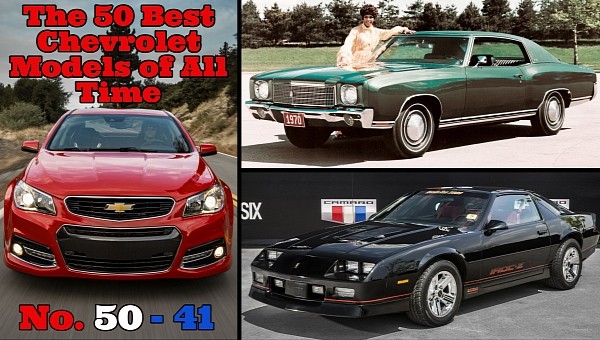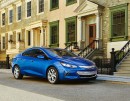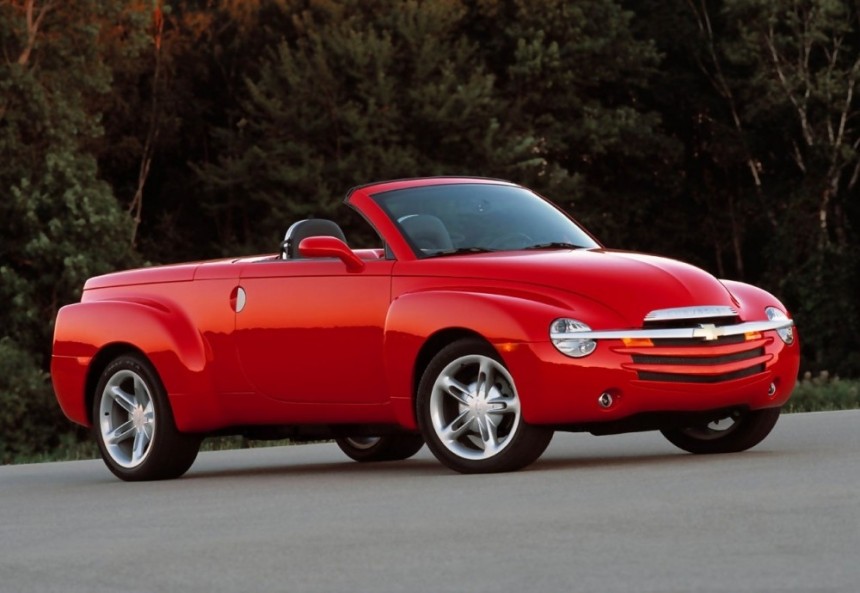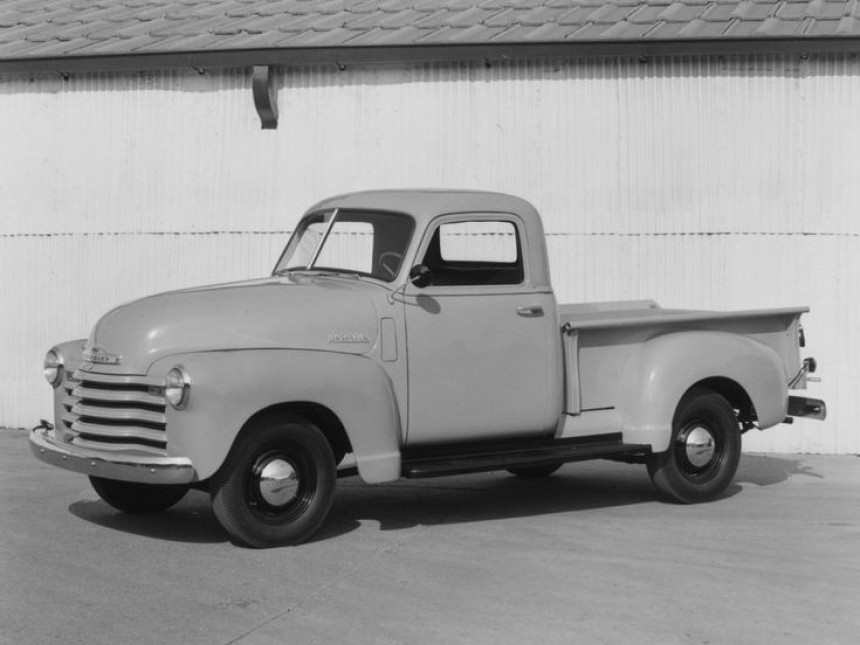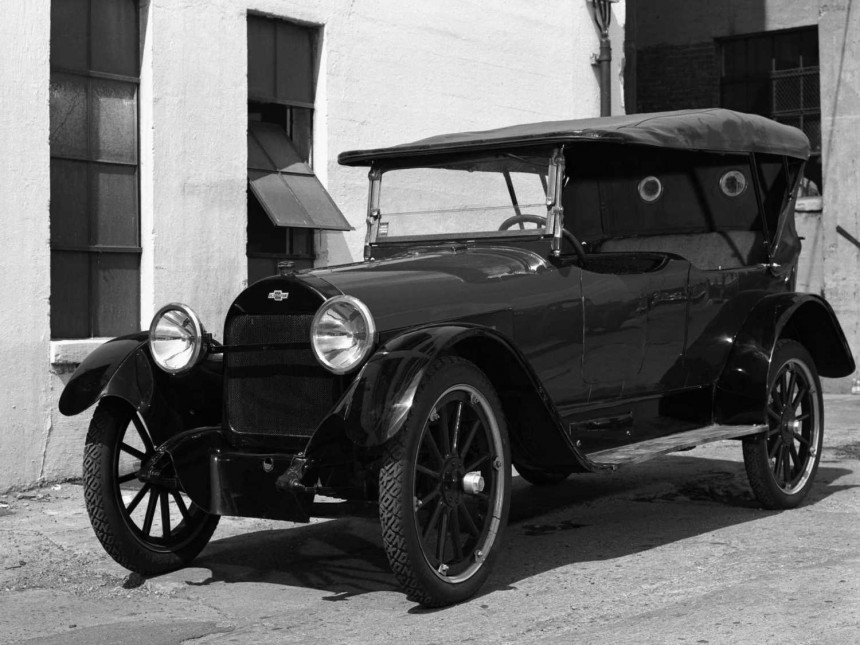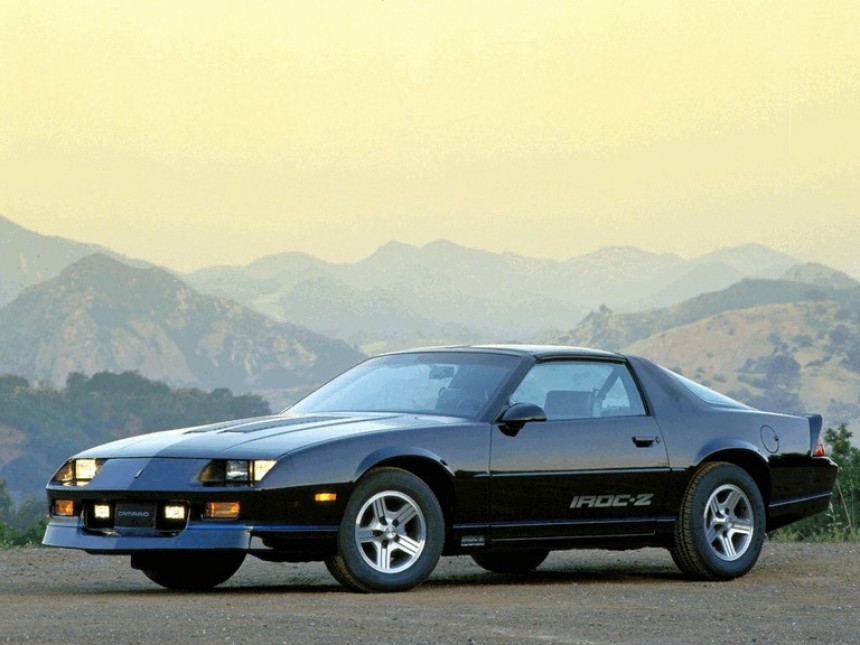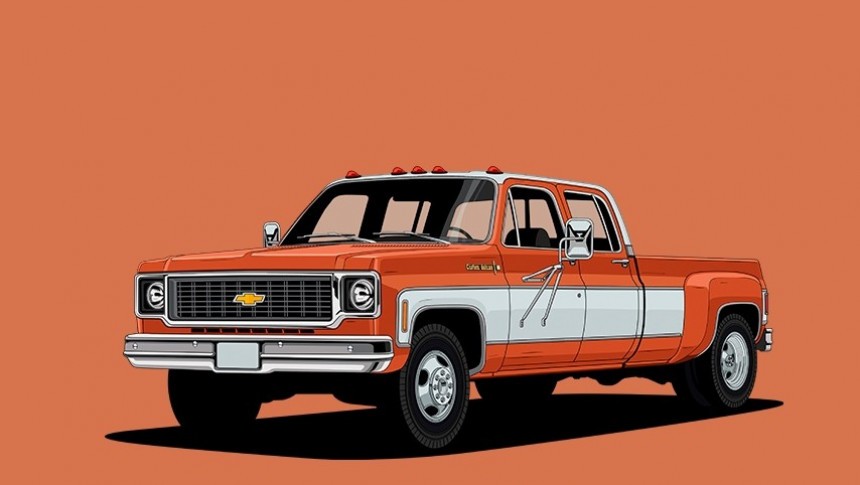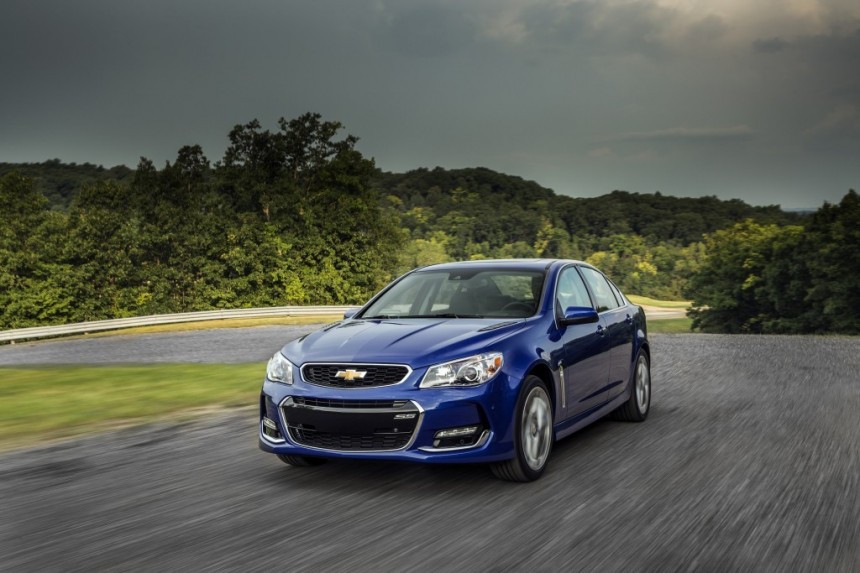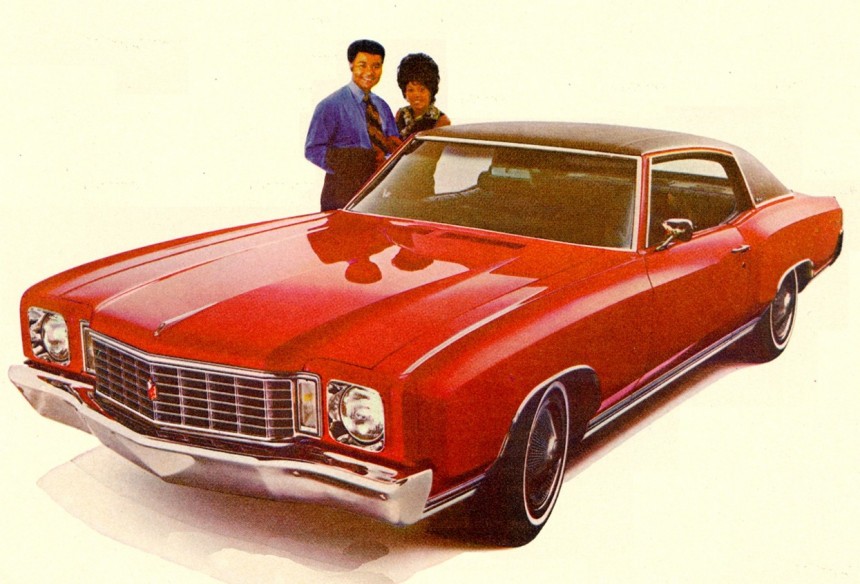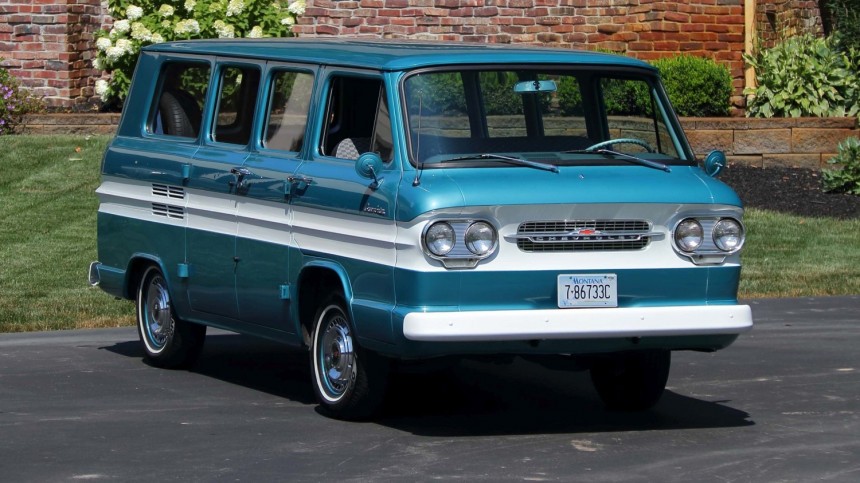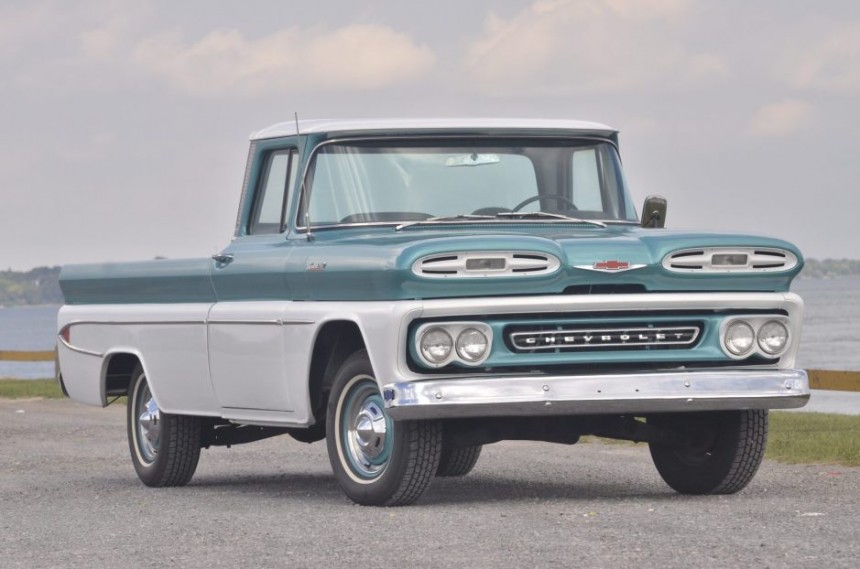Established in 1911 by brothers Louis and Arthur Chevrolet and General Motors co-founder William C. Durant, Chevrolet became GM's high-volume, entry-level car division in 1918. The brand quickly morphed into one of America's greatest automakers and then developed into a giant that builds anything from sports cars to large SUVs and trucks.
The first U.S. carmaker to mass produce a sports car, the 1953 Corvette, Chevrolet also pioneered the proto-SUV market with the 1935 Suburban. But these are only two out of tens of iconic vehicles built by the Detroit-based division. To celebrate the company that gave us so many cool automobiles, we're going to look at the 50 best Chevrolets of all time. Here's part one, which includes numbers 50 to 41.
Introduced for the 2004 model year, the SSR was one of two retro-styled vehicles (alongside the HHR) that Chevy developed in the 2000s. Built until 2006 in about 24,000 units, the SSR wasn't very popular at the time, but it stands out as one of Chevrolet's boldest modern designs.
Short for Super Sport Roadster, the SSR was conceived as a two-door roadster pickup with a unique layout, even when compared to coupe utility models. Inspired by the Advance Design trucks of the late 1940s, the SSR shares the GTT360 platform with the first-generation TrailBlazer and broke cover with a 5.3-liter V8 rated at 300 horsepower.
In 2005, the SSR gained the 6.0-liter LS2 V8 that Chevrolet debuted in the sixth-generation Corvette. Good for 390 horsepower, it enabled the SSR to hit 60 mph (97 kph) from a standing start in only 5.3 seconds. Despite disappointing sales numbers, the SSR lives on as one of Chevrolet's most unique creations.
49. 1947 Advance Design
Chevrolet's first post-WWII design, the Advance Design truck may not be as fast and spectacular as the SSR, but it was the Ford F-Series of its era, outselling the competition from its debut in 1947 until it was replaced by the Task Force series in 1955.
Available in 1/2-, 3/4-, and one-ton formats, it was the first Chevrolet truck to get a radio, telescopic shock absorbers, vent windows, and push-button door handles. Originally powered by a 216-cubic-inch (3.5-liter) inline-six engine and manual transmissions, the Advance Series received a couple of larger, 235- and 261-cubic-inch (3.9- and 4.3-liter) mills and an automatic gearbox in 1954.
The styling of the Advance Design was so popular in its day that it was also adopted by Opel and Vauxhall (GM divisions at the time) and copied by British truck maker Bedford. And as mentioned above, the design language was revived during the retro-craze of the 2000s through the SSR and HHR.
48. 1917 Series D
A short-lived nameplate built only for the 1918 model year, the Series D is not as influential and iconic as other cars on this list. However, it deserves to be here as Chevrolet's first V8-powered automobile.
That's right, Chevrolet designed a V8 long before Ford introduced the famous "Flathead" in 1932. It was also the first American V8 production engine with overhead valves. Rated at 36 horsepower, the 288-cubic-inch (4.7-liter) unit was launched in 1917, when Chevrolet was an independent automaker, and was discontinued under GM ownership in 1918.
That's when the Series D was also sent into the history books without a direct replacement. Chevrolet did not produce another V8 engine until 1955.
47. 2010 Volt
Chevrolet was a bit late to the all-electric car party, but it jumped on the plug-in hybrid bandwagon in the early 2010s with the Volt. A five-door liftback notably different than any other Chevy design-wise, the Volt arrived with a 1.4-liter EcoFLEX four-cylinder gasoline engine (84 horsepower), a primary traction electric motor good for up to 149 horsepower, and a secondary motor rated at 74 horsepower. The latter worked primarily as a generator but also acted as a motor assisting the primary electric motor.
The Volt debuted with a 16-kWh battery, but the pack got increasingly larger over the years, reaching 18.4 kWh for the second generation, launched in 2016. The total range increased from 380 to 420 miles (612 to 676 km), while the all-electric range grew from 35 to 53 miles (56 to 85 km).
Chevy's first mass-produced hybrid was well-received and got numerous accolades, but it was nowhere near as successful as the Toyota Prius. The company sold only 157,000 units until 2019, three years after it introduced the Bolt. But despite not being a high seller, the Volt paved Chevrolet's way toward an electric future that will include at least five EVs by the mid-2020s.
46. 1985 Camaro Z28 IROC-Z
Introduced for the 1982 model year, the third-generation Camaro was a far cry from its late 1960s and early 1970s predecessor in terms of performance. But that's not to say it wasn't a cool pony. Still available with lively colors and a Z28 package that harkened back to the glory days, the third-gen Camaro got a big marketing boost in 1985, when Chevrolet introduced the IROC-Z.
Named after the International Race of Championship, contested by North America's greatest drivers, the IROC-Z was an optional package to the Z28. And it came with a big list of race-oriented features, including an upgraded suspension, custom shocks, larger sway bars, and a special decal package. It was also available with the Corvette's Tuned Port injection system.
The IROC-Z was available with all Z28 powertrains, including the not-so-appealing 305-cubic-inch (5.0-liter) V8 rated at 155 horsepower, but it also came with a beefed-up LB9 unit good for 215 horses. The IROC-Z remained in production with various updates until 1990. In 1988, a 350-cubic-inch (5.7-liter) V8 with 230 horsepower became optional. Even though it was a bit heavy, the Z28 IROC-Z was one of the best-handling sports cars of its era.
45. 1973 C30 Dually
Before it had the Silverado, launched in 1999, Chevrolet went against the all-popular Ford F-Series with the C/K. Built from 1959 to 2002, it's the company's longest-running truck nameplate. The C30 was the company's heavy-duty truck, in the 1970s and the One-Ton Dually hauler you see here is very special.
Because it was the first Crew Cab one-ton pickup with dual wheels in dealerships. Capable of sitting up to six people in this configuration, which was big back in the day, the C30 was also the first Chevrolet truck with curved side glass and the first with a radio antenna integrated into the windshield.
Granted, it wasn't very powerful unless you went with the optional 454-cubic-inch (7.4-liter) big-block V8 (230 horsepower), but it was more aerodynamic and more fuel-efficient than its predecessor. And it became a popular choice for hauling trailers and camper conversions.
44. 2014 Chevrolet SS
Arguably one of the greatest modern sleepers, the SS was also Chevrolet's final attempt to offer a high-performance four-door sedan in the U.S. Essentially a rebadged Holden Commodore (VF generation), the SS was built in Australia and shipped across the ocean with a potent 6.2-liter V8 under the hood. The latter was an LS3 sourced from the C6 Corvette and sent 415 horsepower and 415 pound-feet (563 Nm) of torque to the rear wheels.
A spiritual successor to the Holden G8 (also based on the Commodore), the Chevy SS was conceived from the beginning as a limited-edition sedan that would move no more than 3,000 units a year. Chevrolet's projections were pretty accurate as the SS sold between 2,400 and 3,000 examples from 2014 to 2016, with an additional 4,055 units in 2017. In all, Chevrolet sold 12,866 cars.
With Chevrolet now focusing on SUVs and its last sedan, the Malibu, on its way out, we will never see a high-performance, rear-wheel-drive four-door with a bow-tie badge ever again. And that's why the SS is also becoming a collector's item.
43. 1970 Monte Carlo
Designated as GM's entry-level brand upon its purchase in 1918, Chevrolet began offering premium-trimmed cars in the 1950s, most notably the Bel Air version of the Tri-Five. However, it wasn't until late 1969 that Chevrolet introduced a proper luxury coupe. That's when the Monte Carlo arrived for the 1970 model year.
Prompted by the success of the Pontiac Grand Prix, a luxury-trimmed grand tourer launched for 1969, the Monte Carlo mimicked the styling of the contemporary Cadillac Eldorado but shared underpinnings and many design features with the Chevelle. Even so, the Monte Carlo had a unique appearance and place in the Chevrolet lineup, providing GM enthusiasts with a more affordable entry into the luxury car market.
The campaign was a success, and the Monte Carlo remained in showrooms until 1988. The nameplate was revived in 1995 and soldiered on until 2007. But the first-generation version remains the most iconic due to its availability with high-performance V8 engines. The Monte Carlo also became a successful NASCAR racer, being Chevrolet's vehicle of choice from 1971 until 1988 and then again from 1995 to 2007. In all, Chevy won no fewer than 23 manufacturers' titles with the Monte Carlo. The coupe is also NASCAR's winningest nameplate with 396 triumphs.
42. 1961 Greenbrier
The Express may be Chevrolet's longest-running and most iconic van, but it might not have existed without the Greenbrier. The brand's first hauler, the Greenbrier, arrived in 1961 as Chevrolet's take on the Volkswagen Type 2, known as the Bus in the United States. Much like the German van, the Greenbrier was also based on a rear-engined car.
While Volkswagen used the Beetle as a base, Chevrolet developed the Greenbrier on the Corvair's platform. The engine lineup was almost identical and included 145- and 164-cubic-inch (2.4- and 2.7-liter) six-cylinder boxer engines rated at 80 and 95 horsepower, respectively.
Built for only five years, this MPV enjoyed limited success but prompted Chevrolet to develop a larger version in 1967 and the full-size G-Van in 1970. The latter remained in production for 25 years until it was replaced by the Express.
41. 1960 C/K
Introduced in 1960 as a replacement for the Task Force series, the first-generation C/K was a massive departure from its predecessor. Not only decidedly more modern design-wise, but it was also the first Chevrolet truck developed on a dedicated platform.
The lineup also included chassis-cab trucks and medium- and heavy-duty haulers. Finally, the C/K was the first truck available with four-wheel drive as a factory-supplied option (as opposed to second-party conversions).
Chevrolet also began adding more car-like creature comforts, moving its light truck series into the modern era. An instant hit, the C/K soldiered on over four generations until 2002, which makes it Chevrolet's longest-running pickup truck nameplate.
50. 2004 SSR
Short for Super Sport Roadster, the SSR was conceived as a two-door roadster pickup with a unique layout, even when compared to coupe utility models. Inspired by the Advance Design trucks of the late 1940s, the SSR shares the GTT360 platform with the first-generation TrailBlazer and broke cover with a 5.3-liter V8 rated at 300 horsepower.
In 2005, the SSR gained the 6.0-liter LS2 V8 that Chevrolet debuted in the sixth-generation Corvette. Good for 390 horsepower, it enabled the SSR to hit 60 mph (97 kph) from a standing start in only 5.3 seconds. Despite disappointing sales numbers, the SSR lives on as one of Chevrolet's most unique creations.
49. 1947 Advance Design
Chevrolet's first post-WWII design, the Advance Design truck may not be as fast and spectacular as the SSR, but it was the Ford F-Series of its era, outselling the competition from its debut in 1947 until it was replaced by the Task Force series in 1955.
Available in 1/2-, 3/4-, and one-ton formats, it was the first Chevrolet truck to get a radio, telescopic shock absorbers, vent windows, and push-button door handles. Originally powered by a 216-cubic-inch (3.5-liter) inline-six engine and manual transmissions, the Advance Series received a couple of larger, 235- and 261-cubic-inch (3.9- and 4.3-liter) mills and an automatic gearbox in 1954.
The styling of the Advance Design was so popular in its day that it was also adopted by Opel and Vauxhall (GM divisions at the time) and copied by British truck maker Bedford. And as mentioned above, the design language was revived during the retro-craze of the 2000s through the SSR and HHR.
48. 1917 Series D
A short-lived nameplate built only for the 1918 model year, the Series D is not as influential and iconic as other cars on this list. However, it deserves to be here as Chevrolet's first V8-powered automobile.
That's right, Chevrolet designed a V8 long before Ford introduced the famous "Flathead" in 1932. It was also the first American V8 production engine with overhead valves. Rated at 36 horsepower, the 288-cubic-inch (4.7-liter) unit was launched in 1917, when Chevrolet was an independent automaker, and was discontinued under GM ownership in 1918.
That's when the Series D was also sent into the history books without a direct replacement. Chevrolet did not produce another V8 engine until 1955.
47. 2010 Volt
Chevrolet was a bit late to the all-electric car party, but it jumped on the plug-in hybrid bandwagon in the early 2010s with the Volt. A five-door liftback notably different than any other Chevy design-wise, the Volt arrived with a 1.4-liter EcoFLEX four-cylinder gasoline engine (84 horsepower), a primary traction electric motor good for up to 149 horsepower, and a secondary motor rated at 74 horsepower. The latter worked primarily as a generator but also acted as a motor assisting the primary electric motor.
The Volt debuted with a 16-kWh battery, but the pack got increasingly larger over the years, reaching 18.4 kWh for the second generation, launched in 2016. The total range increased from 380 to 420 miles (612 to 676 km), while the all-electric range grew from 35 to 53 miles (56 to 85 km).
Chevy's first mass-produced hybrid was well-received and got numerous accolades, but it was nowhere near as successful as the Toyota Prius. The company sold only 157,000 units until 2019, three years after it introduced the Bolt. But despite not being a high seller, the Volt paved Chevrolet's way toward an electric future that will include at least five EVs by the mid-2020s.
46. 1985 Camaro Z28 IROC-Z
Introduced for the 1982 model year, the third-generation Camaro was a far cry from its late 1960s and early 1970s predecessor in terms of performance. But that's not to say it wasn't a cool pony. Still available with lively colors and a Z28 package that harkened back to the glory days, the third-gen Camaro got a big marketing boost in 1985, when Chevrolet introduced the IROC-Z.
Named after the International Race of Championship, contested by North America's greatest drivers, the IROC-Z was an optional package to the Z28. And it came with a big list of race-oriented features, including an upgraded suspension, custom shocks, larger sway bars, and a special decal package. It was also available with the Corvette's Tuned Port injection system.
The IROC-Z was available with all Z28 powertrains, including the not-so-appealing 305-cubic-inch (5.0-liter) V8 rated at 155 horsepower, but it also came with a beefed-up LB9 unit good for 215 horses. The IROC-Z remained in production with various updates until 1990. In 1988, a 350-cubic-inch (5.7-liter) V8 with 230 horsepower became optional. Even though it was a bit heavy, the Z28 IROC-Z was one of the best-handling sports cars of its era.
45. 1973 C30 Dually
Before it had the Silverado, launched in 1999, Chevrolet went against the all-popular Ford F-Series with the C/K. Built from 1959 to 2002, it's the company's longest-running truck nameplate. The C30 was the company's heavy-duty truck, in the 1970s and the One-Ton Dually hauler you see here is very special.
Because it was the first Crew Cab one-ton pickup with dual wheels in dealerships. Capable of sitting up to six people in this configuration, which was big back in the day, the C30 was also the first Chevrolet truck with curved side glass and the first with a radio antenna integrated into the windshield.
Granted, it wasn't very powerful unless you went with the optional 454-cubic-inch (7.4-liter) big-block V8 (230 horsepower), but it was more aerodynamic and more fuel-efficient than its predecessor. And it became a popular choice for hauling trailers and camper conversions.
44. 2014 Chevrolet SS
Arguably one of the greatest modern sleepers, the SS was also Chevrolet's final attempt to offer a high-performance four-door sedan in the U.S. Essentially a rebadged Holden Commodore (VF generation), the SS was built in Australia and shipped across the ocean with a potent 6.2-liter V8 under the hood. The latter was an LS3 sourced from the C6 Corvette and sent 415 horsepower and 415 pound-feet (563 Nm) of torque to the rear wheels.
A spiritual successor to the Holden G8 (also based on the Commodore), the Chevy SS was conceived from the beginning as a limited-edition sedan that would move no more than 3,000 units a year. Chevrolet's projections were pretty accurate as the SS sold between 2,400 and 3,000 examples from 2014 to 2016, with an additional 4,055 units in 2017. In all, Chevrolet sold 12,866 cars.
With Chevrolet now focusing on SUVs and its last sedan, the Malibu, on its way out, we will never see a high-performance, rear-wheel-drive four-door with a bow-tie badge ever again. And that's why the SS is also becoming a collector's item.
43. 1970 Monte Carlo
Designated as GM's entry-level brand upon its purchase in 1918, Chevrolet began offering premium-trimmed cars in the 1950s, most notably the Bel Air version of the Tri-Five. However, it wasn't until late 1969 that Chevrolet introduced a proper luxury coupe. That's when the Monte Carlo arrived for the 1970 model year.
Prompted by the success of the Pontiac Grand Prix, a luxury-trimmed grand tourer launched for 1969, the Monte Carlo mimicked the styling of the contemporary Cadillac Eldorado but shared underpinnings and many design features with the Chevelle. Even so, the Monte Carlo had a unique appearance and place in the Chevrolet lineup, providing GM enthusiasts with a more affordable entry into the luxury car market.
The campaign was a success, and the Monte Carlo remained in showrooms until 1988. The nameplate was revived in 1995 and soldiered on until 2007. But the first-generation version remains the most iconic due to its availability with high-performance V8 engines. The Monte Carlo also became a successful NASCAR racer, being Chevrolet's vehicle of choice from 1971 until 1988 and then again from 1995 to 2007. In all, Chevy won no fewer than 23 manufacturers' titles with the Monte Carlo. The coupe is also NASCAR's winningest nameplate with 396 triumphs.
42. 1961 Greenbrier
The Express may be Chevrolet's longest-running and most iconic van, but it might not have existed without the Greenbrier. The brand's first hauler, the Greenbrier, arrived in 1961 as Chevrolet's take on the Volkswagen Type 2, known as the Bus in the United States. Much like the German van, the Greenbrier was also based on a rear-engined car.
While Volkswagen used the Beetle as a base, Chevrolet developed the Greenbrier on the Corvair's platform. The engine lineup was almost identical and included 145- and 164-cubic-inch (2.4- and 2.7-liter) six-cylinder boxer engines rated at 80 and 95 horsepower, respectively.
Built for only five years, this MPV enjoyed limited success but prompted Chevrolet to develop a larger version in 1967 and the full-size G-Van in 1970. The latter remained in production for 25 years until it was replaced by the Express.
41. 1960 C/K
Introduced in 1960 as a replacement for the Task Force series, the first-generation C/K was a massive departure from its predecessor. Not only decidedly more modern design-wise, but it was also the first Chevrolet truck developed on a dedicated platform.
The lineup also included chassis-cab trucks and medium- and heavy-duty haulers. Finally, the C/K was the first truck available with four-wheel drive as a factory-supplied option (as opposed to second-party conversions).
Chevrolet also began adding more car-like creature comforts, moving its light truck series into the modern era. An instant hit, the C/K soldiered on over four generations until 2002, which makes it Chevrolet's longest-running pickup truck nameplate.
